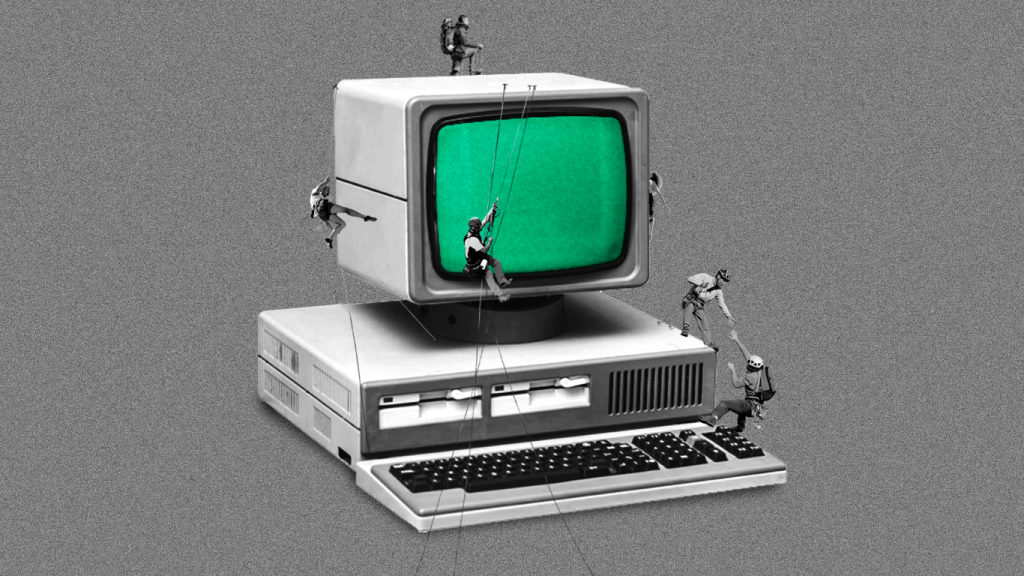Learn about the 12 technologies your company cannot leave aside
The world does not stop, even with the challenges brought on by the pandemic. In addition, it was precisely at this moment that companies had challenging proposals in order not to be left out of the game. Besides growing, companies found themselves in the position of having to stand out in order to remain competitive in the market.
To this end, it is crucial to filter among the technological innovations available those that are worth investing in. We counted on one of the greatest authorities in technology to help us in this matter: Gartner – one of the greatest guidance bodies for companies in technological matters – which made available a list with the greatest trends. Check out the 12 technologies that will help companies compete for business opportunities.
Cybersecurity mesh
How much data does your company currently use? Are you sure it is properly protected? The truth is that by relying on multiple storage locations, we increase breaches and vulnerabilities.
It is common, for instance, to store data in cloud servers and data centers, which to some extent demand different security approaches. Without integration, cybersecurity strategies are seriously hampered.
In view of this need, the cybersecurity mesh concept emerges a specific architecture for information security solutions. These are integrated and cooperative strategies for better results and greater information protection, regardless of where the databases are located.
According to Gartner, by 2024, organizations that adopt the cybersecurity mesh, with the integration of security tools and a cooperative ecosystem, will help reduce the impacts of individual security incidents by 90 percent.
Privacy-enhancing computing
Still on data protection, it is essential that the use, storage and treatment of data prioritize privacy. Remember that the current legislation on data protection (LGPD) regulates all these issues.
Privacy-Enhancing Computation brings solutions that use minimal personal information in everyday life, maximizing data protection and user empowerment. It also enables secure sharing across different ecosystems.
Encryption, splitting, and pre-processing of sensitive data are present in Privacy-Enhancing Computation, always in line with current legislation.
Cloud-native platforms
The use of cloud computing is a reality. Gartner itself had already announced this, when it predicted that, by 2020, it would be very rare to find organizations that did not work with clouds (as rare as those that did not use the internet on a daily basis).
Cloud computing is a model of computing in which data and solutions are stored on remote servers and can be accessed from any device, at any time.
A recent advance is the use of cloud-native platforms, which bring greater elasticity and scalability to the model, with reduced turnaround time for requests and greater independence in terms of infrastructure.
Data Fabric
The next trend relates to information bottlenecks that remain isolated within solutions and applications.
The data fabric resembles a network architecture that allows interconnection at various levels. It is possible to intelligently integrate information from different platforms and users, allowing systems to learn from the data used. The forecast is that this system will be four times more efficient by 2024, so be sure to integrate it into your company or business.
Decision Intelligence
Decision intelligence is a methodology used to make decisions based on data analysis. It relates to a world of very agile transformations, after all, situations increasingly demand fast, efficient and accurate answers.
This is done through an optimized framework for decision intelligence, which occurs from information provided by machine learning and feedback. This methodology uses data integration, data analytics, and artificial intelligence.
Hyperautomation
We have reached a point where all automation requires greater intensity. With this comes the concept of hyper-automation, which combines technologies such as RPA, low-code platforms, and data mining tools.
Hyperautomation brings agility to everyday life, whether in decision-making or in routine activities, with tools that go beyond the automation of individual processes. One example is the automation of a chain of actions: if something changes at the first end of the chain, the subsequent steps will be adapted via machine learning.
AI Engineering
Artificial Intelligence Engineering ensures more integrated and consistent models on a daily basis and helps in future projections. AI engineers work with data science to develop software and algorithms that help correct flaws and enhance results.
Total Experience
In Total Experience (TX) we have the union of Customer Experience (CX), Employee Experience (EX), User Experience (UX) and Multi-Experience (MX). The idea is that, by viewing the experience in an integrated way, it is possible to promote the satisfaction of all those involved in the processes and thus increase productivity and profit.
Generative AI
Here is a trend that is coming on strongly for its potential to use machine learning to generate original and realistic solutions (hence the name “generative”). It can be used for, as an example, the creation of new code and the development of completely innovative solutions – all without direct human intervention.
Distributed enterprises
The subject here is the important advances for new work models, especially for the “remote-first” direction, which needs technical changes to happen fluidly, without engendering bottlenecks.
Within this context, the creation of distributed companies plays a fundamental role. There is a decentralization of functions – that is, they do not need to be concentrated in a physical headquarters – allowing professionals to work from anywhere, without significant inconveniences.
Autonomic Systems
Autonomic systems learn from their physical environment. They can dynamically change and optimize their own algorithms. This autonomous behavior in the future may be extended to drones, machines, Internet of Things technologies, and more.
There are many trends that can strengthen competitiveness strategies in organizations, and it is essential to be aware of all of them. Implementing changes as early as possible is what will make your company boost results and be ahead in the market.
Tell us what you have already implemented and how you have been using these technologies in your current day-to-day life.
Have you enjoyed these tips for implementing digital transformation in your company or business? Then follow us on LinkedIn and Instagram so you will not miss upcoming content.


